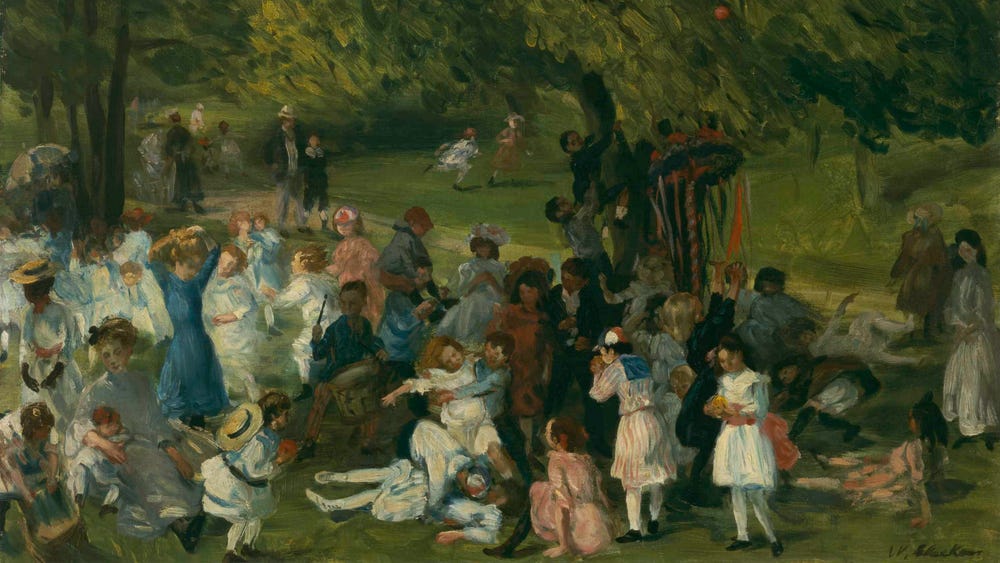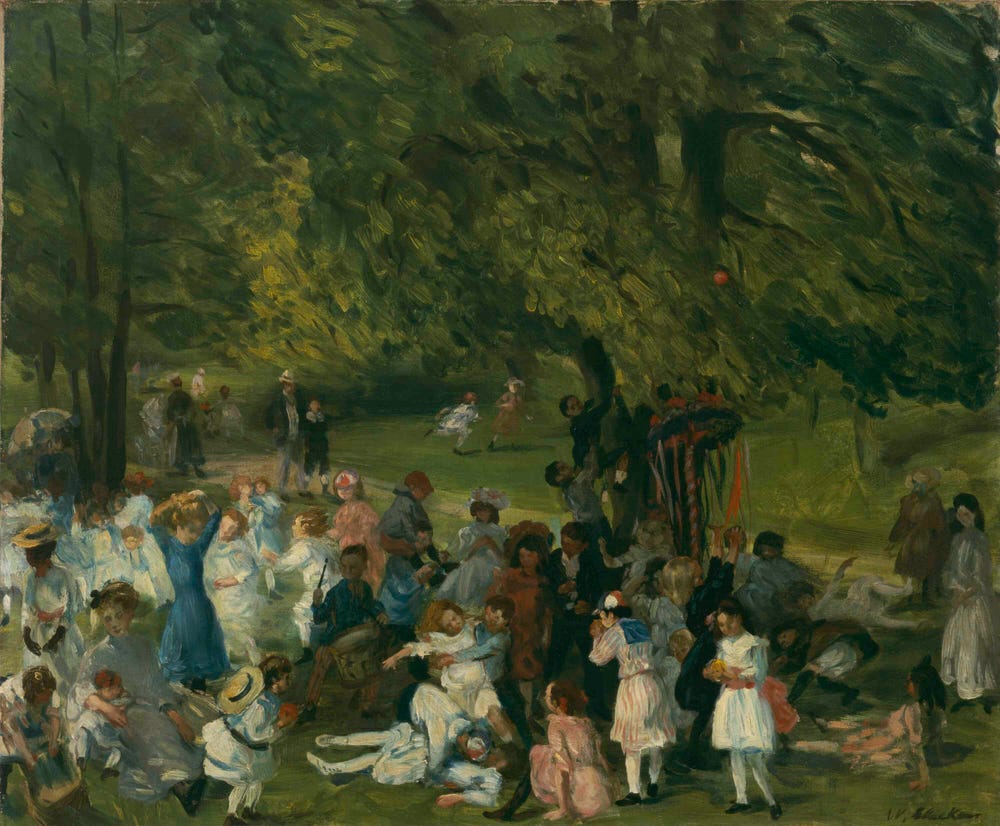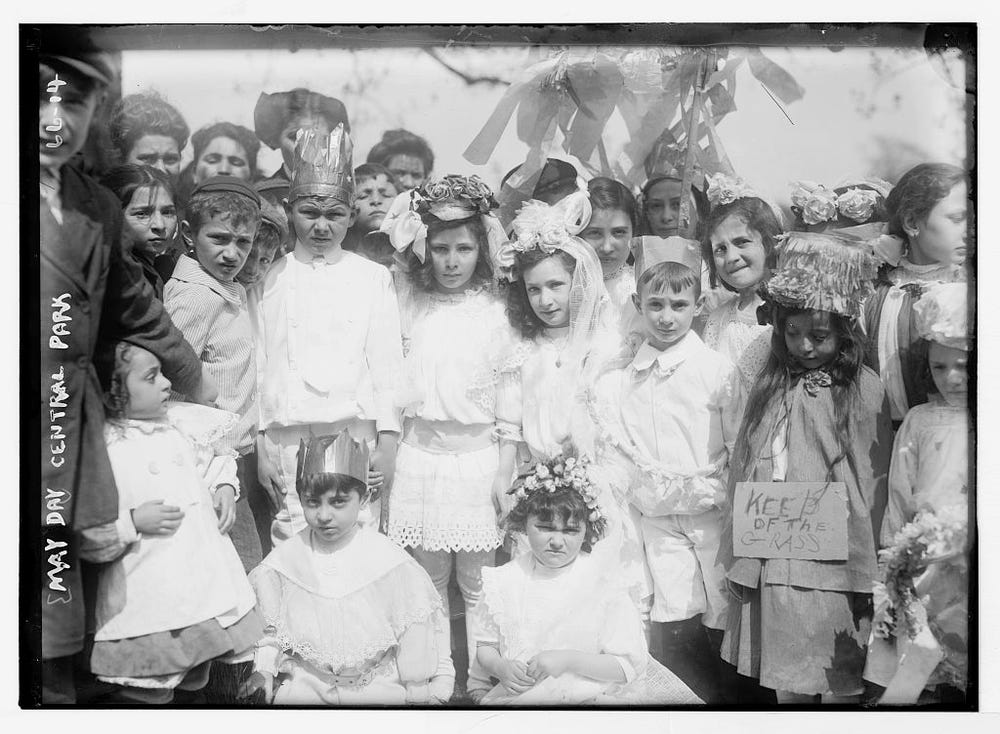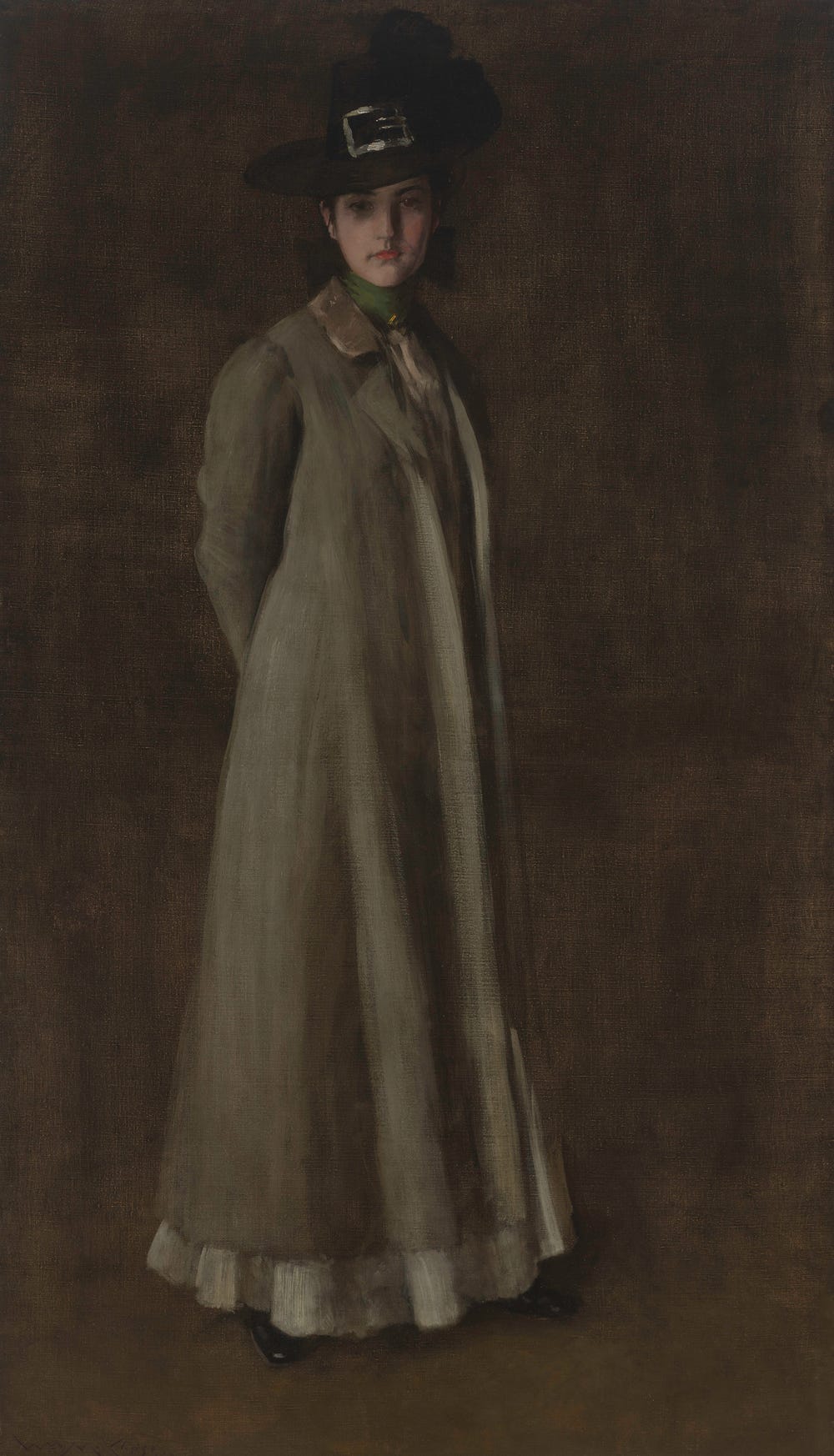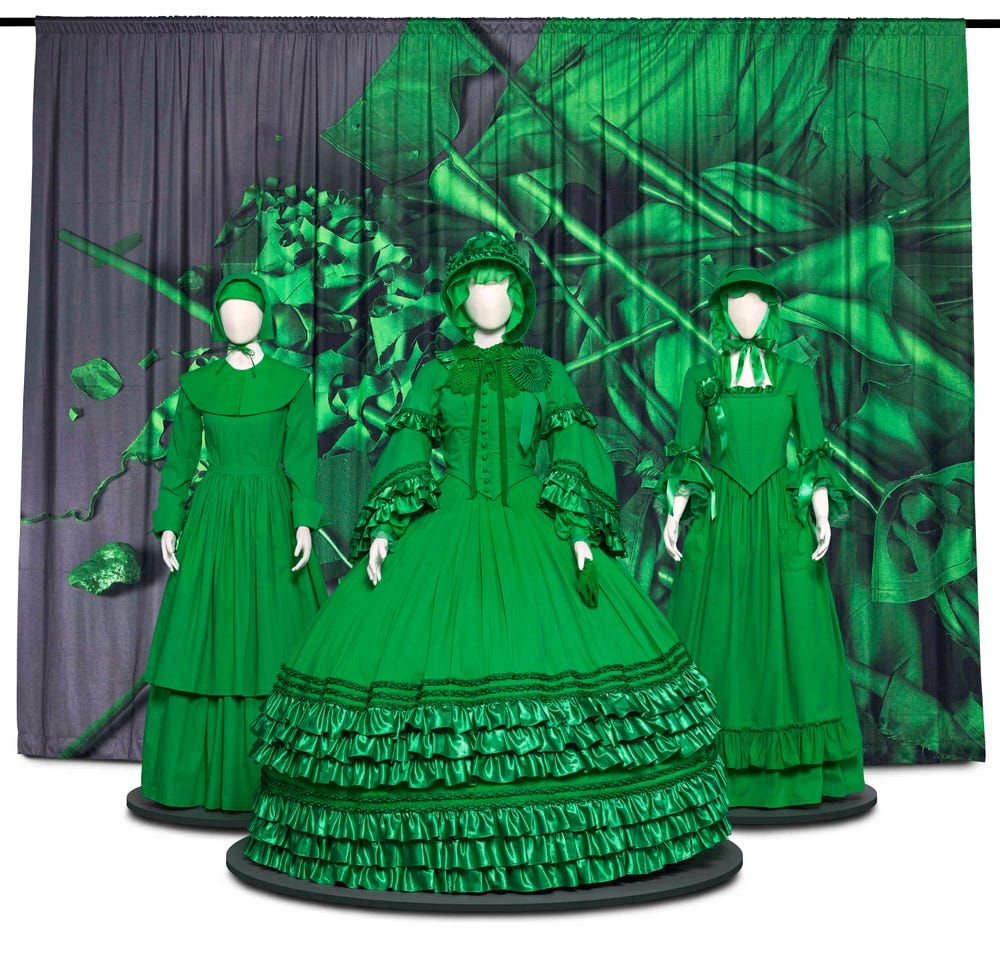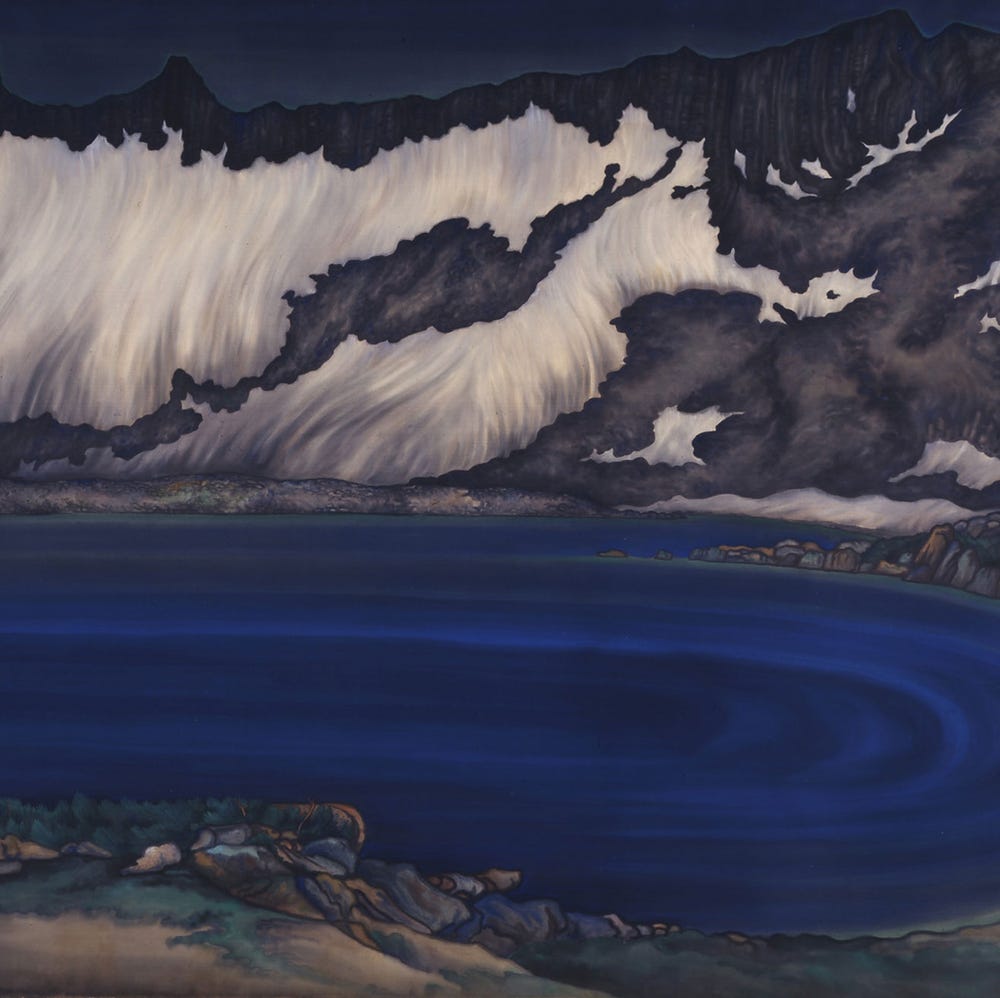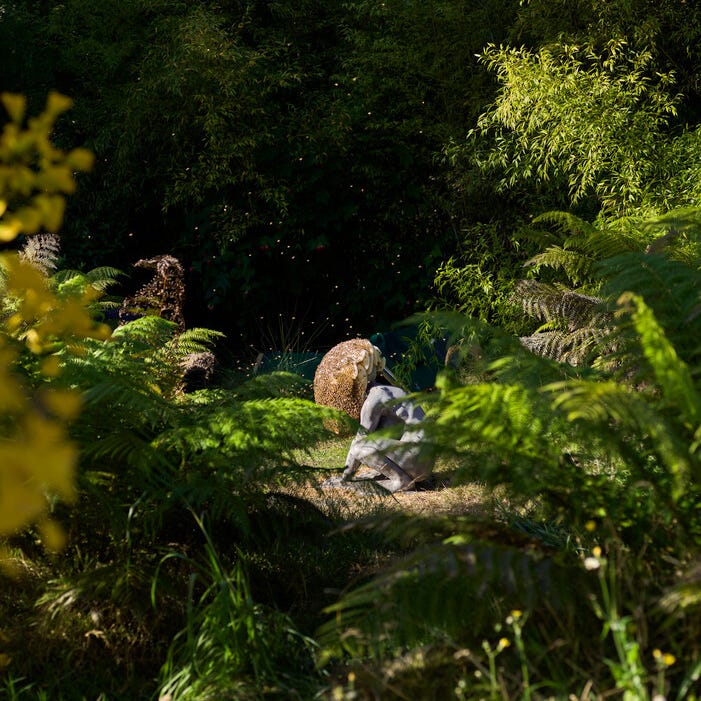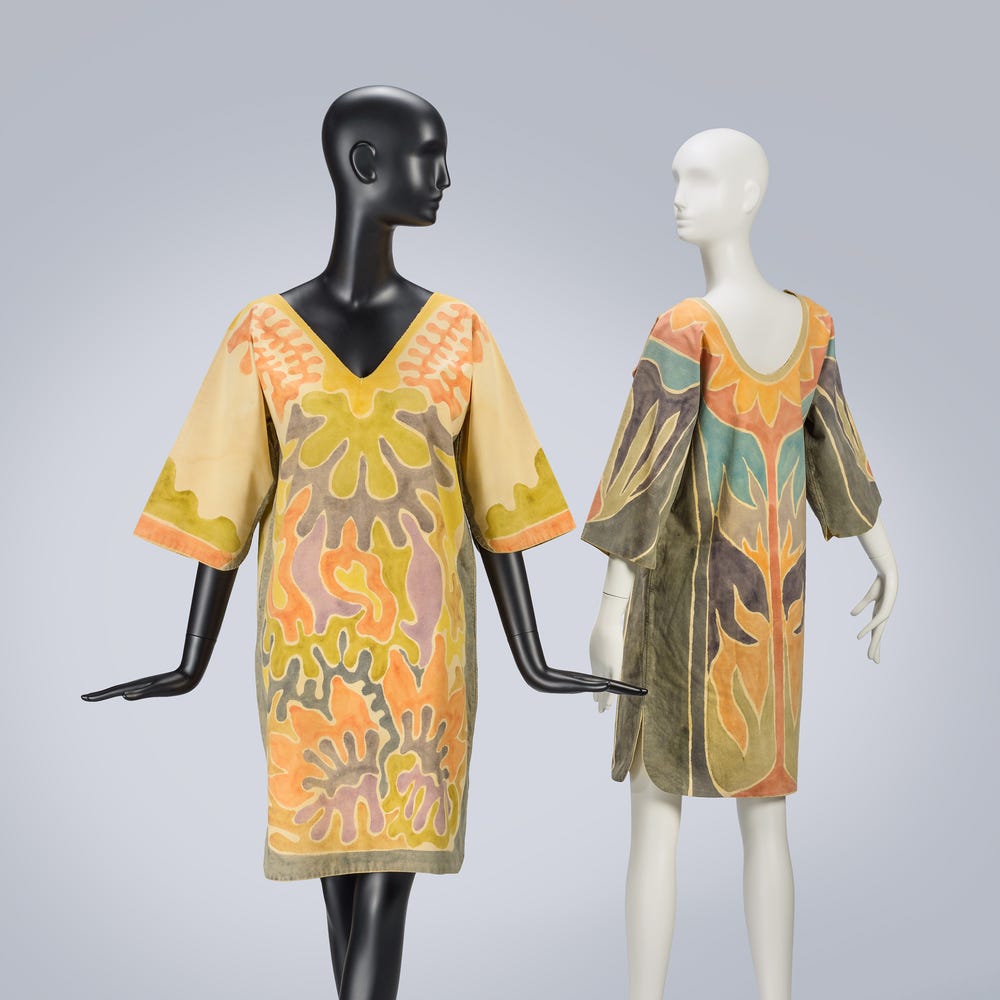Fashion / History: A Fresh Look at American Impressionism + Realism
By Hannah Waiters, curatorial cataloguing fellow, American and contemporary art
October 5, 2023
William James Glackens (1870–1938), May Day, Central Park (detail), ca. 1904. Oil on canvas. 25 1/8 x 34 1/4 in. (63.8 x 87 cm); Frame: 34 x 39 in. (86.4 x 99.1 cm). Museum purchase, gift of the Charles E. Merrill Trust with matching funds from the M. H. de Young Museum Society, 70.11
Behind every figurative painting is a story.
Born, raised, and trained in the Bay Area as an interdisciplinary artist and researcher, I’m interested in what stories our city’s collections reveal about the history of Bay Area and US fashion, and the mindsets of the times. At the turn of the 20th century, with the rise of fashion magazines, ready-to-wear clothing, and press, fashion had a major impact on the modern artistic lens.
In the summer of 2022, I worked with the American Art and Costume and Textile Arts departments at the Fine Arts Museums of San Francisco producing extended wall labels. I focused on the role of fashion in the work of American Impressionist and Realist artists and their contemporaries, referencing forgotten photographs, buried news coverage, period costumes, and popular fashion illustrations. Here, I reexamine the museum’s collection of Impressionist and Realist American art through the lens of fashion history.
Across the Atlantic and here at home
In the late 19th and early 20th centuries, the United States transformed from an agrarian and rural nation to an industrial and urban international power. As more Americans accumulated wealth from labor exploitation and empire building, many were able to travel abroad. Among them were American artists who traveled to Europe, where they studied in academies, visited art capitals, and joined art colonies. While some artists enjoyed successful careers abroad, others were denied this opportunity due to racial, gender, and class discrimination.
Inspired by their French predecessors, the American Impressionists embraced an idealized vision of modern life. They painted landscapes — and the new leisure class — outdoors to capture light, color, and movement. Their paintings often emphasized traditional gender roles, especially for women, who typically were depicted as wives, mothers, and objects of desire.
In contrast, many Realist artists adopted New York City and its inhabitants as their subjects. At the time, the artists of the Ashcan School — relatively privileged, white, male artists — were considered radical for depicting immigrant and working-class subjects in addition to wealthier patrons. Today, their portrayals of the working class raise questions about the uneven power dynamics inherent in such depictions.
William James Glackens, May Day, Central Park (1904)
William James Glackens (1870–1938), May Day, Central Park, ca. 1904. Oil on canvas. 25 1/8 x 34 1/4 in. (63.8 x 87 cm); Frame: 34 x 39 in. (86.4 x 99.1 cm). Museum purchase, gift of the Charles E. Merrill Trust with matching funds from the M. H. de Young Museum Society, 70.11
William Glackens’s work as a newspaper and magazine illustrator influenced the sketch-like style he used to capture urban life in his paintings. In this work, a group is gathered in Manhattan’s Central Park on May Day. In the late 19th century, this ancient celebration of spring was reimagined as International Workers’ Day, promoting the rights of laborers worldwide. In 1903, a New York World reporter described the fashions associated with the holiday, writing that the “grass was so strewn with white frocks that . . . it looked as if household linen laid out to bleach had suddenly taken to skipping about.”
The presence of African American subjects in the scene, such as the woman at left in a straw boater hat and white dress with pink sash, suggests an ideal of class and racial solidarity that was not, in reality, always realized by supposedly progressive organizations of the era, such as labor unions.
Children on May Day in Central Park, New York, 1908. Film negative: glass, 5 x 7 in. (or smaller). Bain News Service, publisher, 5/1/08 (date created or published later by Bain). LC-B2- 66-14 [P&P] LOT 7228 (Corresponding print). Library of Congress Prints and Photographs Division Washington, D.C. 20540 USA . Library of Congress, Prints & Photographs Division, LC-DIG-ggbain-00343
William Merritt Chase, Portrait of Miss D. (ca. 1900)
William Merritt Chase, (1849–1916), Portrait of Miss D., ca. 1900. Oil on canvas. Foundation Gift of George R. Roberts in memory of Leanne B.Roberts, 2005.67
American Impressionist William Merritt Chase, who founded the Chase School (later Parsons) in 1896, also had a fascination with period dress. Here, his daughter Dorothy, in a commanding frontal stance, wears a gray coat and a pilgrim hat with a buckled clasp. Such garments, modeled after 17th-century English Puritan dress, were worn by white Americans from the 1890s until the early 20th century. Prejudice toward southern and eastern European immigrants, many Catholic or Jewish, surged during the third wave of US immigration (ca. 1880 – 1924), when the number of new arrivals grew to more than 20 million. Anxieties that the nation’s Protestant Anglo-Saxon population would be “diluted” helped foster the American Colonial Revival movement, which idealized the nation’s Puritan heritage and imperial Anglo-Saxon influence.
Stephanie Syjuco, The Visible Invisible (2018)
Stephanie Syjuco, The Visible Invisible: Plymouth Pilgrim (Simplicity), Antebellum South (Simplicity), Colonial Revolution (McCall's), 2018. Cotton plain weave, dress forms with dedicated platforms, printed backdrop, chroma key fabric, dimensions variable. Fine Arts Museums of San Francisco, Gift of the Svane Family Foundation, 2022.26.1.1–4
Considering these styles of influence, it is important to also question museum collections and conservation practices. Turning our attention to Stephanie Syjuco’s The Visible Invisible: Plymouth Pilgrim (Simplicity), Antebellum South (Simplicity), Colonial Revolution (McCall’s) (2018), gifted by the Svane Family Foundation, we see what happens when we bring together contemporary and historical art. Layering these histories, one can glean what information is missing from the history and collection.
Bay Area artist, researcher, and educator Syjuco reminds us that historical fashions in museum archives and collections — and the mindsets they reflect — are not, in fact, in the past. The installation includes historical patterns worn by three mannequins, recounting problematic American women's fashions. These dresses are altered by being constructed of chroma green fabric — a color used in editing software that is seen as impartial. At left, Syjuco modernizes a colonial pilgrim dress, demonstrating how colonialism continues to make itself present through a colonized museum presentation of the suffering of Indigenous people. The center mannequin is dressed luxuriously, becoming a symbol of excess, capital, and power. The dress underscores the widespread production of Eurocentric-inspired ensembles representative of the Antebellum South and the global economies of cotton and enslavement. At right is a historical costume in the Colonial Revival style — reflecting “national purity” and disdain for “foreign influence.” In these artworks, we can see “progress” (or the lack of progress) in how imperial American dress has been and continues to be interpreted.
A new approach
This project, which involved consulting with curators and historians inside FAMSF and at the National Museum of African American History and Culture, seeks to provide a new approach to the American Art collection, revisiting paintings through the lens of fashion history. The process was inspired by my project at the San Francisco Arts Commission, Phantasmagoria (2021–2022). This ongoing participatory exhibition reimagined collecting practices, mapping how the absence of everyday fashion in collections has erased marginalized communities and impacted their sense of belonging. Throughout both projects, my goal was to create alternative models for producing collective knowledge.
